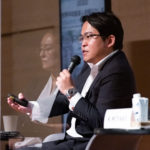Hiroshima Report 2023(6) Transparency in the Peaceful Use of Nuclear Energy
A) Efforts for transparency
In addition to accepting IAEA full-scope safeguards, as described earlier, NNWS should aim to be fully transparent about their nuclear-related activities and future plans, in order to demonstrate that they has no intention of developing nuclear weapons. Every state that concludes an Additional Protocol with the IAEA is obliged to provide information on its general plans for the next ten-year period relevant to any nuclear fuel cycle development (including nuclear fuel cycle-related research and development activities). Most countries that actively promote the peaceful use of nuclear energy have issued mid- or long-term nuclear development plans, including for the construction of nuclear power plants.150 The international community may be concerned about the possible development of nuclear weapon programs when states conduct nuclear activities without publishing their nuclear development plans (as has happened with Israel, North Korea and Syria, for example), or that engaged in nuclear activities which seem inconsistent with their plans (e.g., allegedly, Iran).
From the standpoint of transparency, communications received by the IAEA from certain member states concerning their policies on the management of plutonium, including the amount of plutonium they held, are also important. Using the format of the Guidelines for the Management of Plutonium (INFCIRC/549) agreed in 1997, the five NWS plus Belgium, Germany, Japan and Switzerland publish data annually on the amount of civil unirradiated plutonium under their control. As of December 2021, however, China has not submitted a report since 2018. France and Germany reported their holdings not only of civil plutonium but also of HEU.151 China has not disclosed details about the two reprocessing plants under construction, nor has it clearly stated that it does not intend to divert the two fast breeder reactors under construction to military purposes.
Japan’s report submitted to the IAEA was based on the annual report, titled “The Current Situation of Plutonium Management in Japan,” released on July 12, 2022, by the Japan Atomic Energy Commission (JAEC).152
Other NNWS surveyed in this Hiroshima Report have either publicized the amount of their fissile material holdings, or at least have placed their declared nuclear material under IAEA safeguards. This allows the conclusion that these states have shown clear evidence of transparency with regard to their civil nuclear activities.
B) Multilateral approaches to the fuel cycle
Several countries have sought to establish multilateral approaches to the fuel cycle, including nuclear fuel banks, as one way of dissuading NNWS from adopting indigenous enrichment technologies. Austria, Germany, Japan, Russia, the United Kingdom, the United States and the EU, as well as six countries acting jointly (France, Germany, the Netherlands, Russia, the United Kingdom and the United States), have made their respective proposals.
Among those proposals, nuclear fuel banks have made actual and concrete progress. Subsequent to the establishment of the International Uranium Enrichment Centre (IUEC) in Angarsk (Russia) and the American Assured Fuel Supply, the IAEA LEU Bank in Kazakhstan was inaugurated in August 2017.153 The IAEA LEU Bank was funded mainly by the Nuclear Threat Initiative (NTI), Kuwait, Norway, the UAE, the United States and the EU.154
150 The World Nuclear Association’s website (http://world-nuclear.org/) provides summaries of the current and future plans of civil nuclear programs around the world.
151 IAEA, “Communication Received from Certain Member States Concerning Their Policies Regarding the Management of Plutonium,” https://www.iaea.org/publications/documents/infcircs/communica tion-received-certain-member-states-concerning-their-policies-regarding-management-plutonium.
152 Office of Atomic Energy Policy Cabinet Office, “The Status of Plutonium Management in Japan—2020,” July 12, 2022, http://www.aec.go.jp/jicst/NC/sitemap/pdf/kanri220712_e.pdf.
153 In NTI’s original proposal for a nuclear fuel bank, one of the conditions for providing fuel was that the country must have renounce the possession of facilities related to nuclear fuel cycle. However, such a condition was not included for neither the Russian center nor the Kazakhstan fuel bank.
154 Approximately $150 million in funds were allocated for establishment and operation for the next 20 years.






![[Interview] On How to Face the Weaponization of the Economy (Energy, Food, etc.)<br> [Oisix Ra Daichi] [Interview] On How to Face the Weaponization of the Economy (Energy, Food, etc.)<br> [Oisix Ra Daichi]](https://hiroshimaforpeace.com/en/wp-content/uploads/sites/2/2023/09/スクリーンショット-2023-08-09-15.43.07-2-150x150.png)
